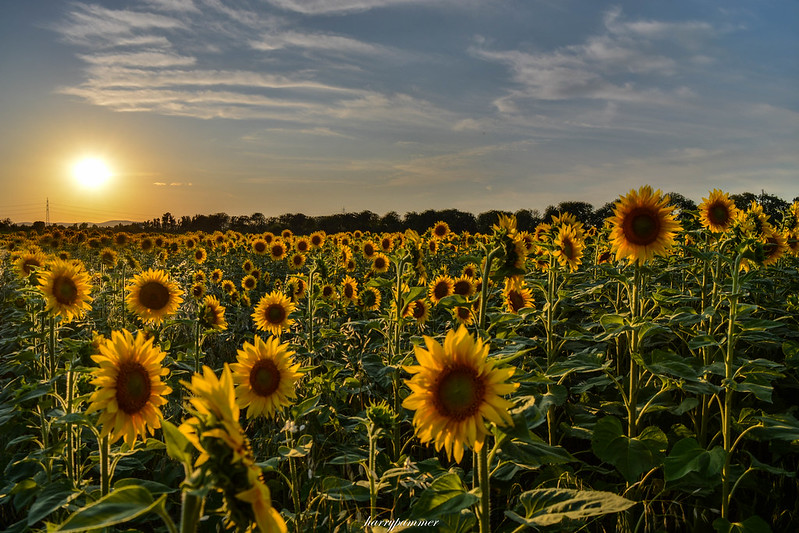Whereas the Netherlands and Germany have long been hotbeds of 3D printing activity, nearby Austria so far has not. The government of the Province of Lower Austria plans to change this, aiming to encourage businesses to take up 3D printing through two incentive packages. They state that, “The two funding packages and 3-D printing technologies contribute significantly to securing business premises, creating jobs, and strengthening Austria’s international competitiveness as a business location.”
Lower Austria—which, confusingly, is in Austria’s Northeast—is a bucolic place of mountains, pastures, vineyards, and rivers. Nestled there are some global players such as Voith, and the area also has a mechatronics cluster. The region also has the Technopol Wiener Neustadt, and within it, the FOTEC 3D-print center. Austria previously has brought us self-actuating 3D printed objects and precision SLA research.

Companies can now obtain a grant through, “investments in green technologies, digitization – especially 3-D printing – and health are exceptionally supported by 14%. The investment bonus applies to tangible and intangible assets above EUR 5,000 net. All companies in Austria are eligible to apply. The Federal Ministry for Digital and Economic Affairs initially set the program’s upper limit at EUR 50 million. Still, it announced later to increase the funds to up to EUR 1 billion if necessary.”
The submission deadline for this package is February 28th 2021. You can apply here.

The second package is even more lucrative:
“digi4KMU-digi investment” funding package specifically underlined 3-D printing eligible for funding and funds investments of a maximum of € 50,000.00 with a grant of up to 50%. Companies can also apply for a NÖBEG liability of 80% of the bank loan up to a maximum of € 100,000.00. All existing small- and medium-sized commercial enterprises based in Lower Austria are eligible to apply. However, as the submission deadline ends on October 31, 2020, interested companies should hurry.”
Apply for that here.

The process has been supported by AM Austria, a government-initiated nonprofit that supports 3D printing in Austria. This is an extraordinarily generous incentive scheme by the province. It could easily lead to a run on machine purchases and 3D printing material investments in the region.
To have your investment supported to such a degree will make it very tempting for local businesses to invest now in 3D printing. Will it lead to firms completely changing the way through which they do things? Probably not, but by giving such deep and broad support, this will certainly spur innovation in the area. The extensive investment is also meant to spur companies into investing even during COVID. And, should you be stuck in a locked-down city apartment without a balcony, the Austrian countryside could feel very welcoming right about now.
It is notable that Singapore and Dubai are currently the only places vying to become local 3D printing clusters. These cities are working to get companies to relocate there. Indeed both have had extensive experience in the past in creating transport, shipping, finance and technology clusters through incentives. In the U.S., Pflugerville Texas has also seen success by bringing EOS, Essentium, and AMT (Additive Manufacturing Technologies) to set up shop in the area. Reportedly, the city of Berlin was giving 3D printing companies free land on which to build office buildings at one point. Apart from that, there seems to be little in the way of economic policy directed at becoming a 3D printing cluster worldwide. Apart from two city-states, no national governments seem to find it beneficial to become the definitive cluster for 3D printing.
There would, however, be outsized benefits accruing to an ecosystem that became the one true location for 3D printing. We offer and need all sorts of jobs, not only in software, and our products are sold worldwide. In a high-growth industry, we continue to make physical goods. We also dovetail well with other exciting industries, such as medical and aerospace. I’m not sure if you could make your city, state or country the definitive locale for 3D printing, but I’m puzzled why more places are not making a concerted effort.
Lower Austria’s package of benefits is aimed at existing Austrian firms, but it could very well tempt those outside of the country. At first one may imagine that the cobbled streets and chocolate cakes of nearby Vienna would be the country’s only chance at becoming a 3D printing cluster. But, as of now, I bet that there are a lot of people that have a renewed or new wish to live in a country setting with a lovely house and garden for little cost.
Many European regions suffer from a lack of investment and depopulation, as people move to the center or industrial areas. The parts they leave behind are often pristine and lovely, though they lack the excitement of sushi and a club scene. But what if we realized now that we didn’t need the city as much as we thought? What if we have all developed a newfound appreciation for that which is not as spoilt. And what if we brought with us jobs that were much cleaner and higher value, but still involve manufacturing? I really see a groundswell of support for country living, growing your own vegetables and the land around me. I really do believe that areas such as Lower Austria or lovely but empty Spanish or Portuguese villages have an opportunity to attract people who would relish a more natural but perhaps sedate life.

The Yellow House in Arles is the one with the green shutters, Vincent’s bedroom is the one with the closed shutters.
Toward the end of his life van Gogh moved to Arles. Initially meant to be a stop on an onward journey, it became pivotal when he painted a series of sunflower paintings there. Two he swapped for one work with Gaugin. Van Gogh worked hard to bring Gaugin to his Yellow House—set on the Place Lamartine in the center of Arles, conspicuously close to the ladies of the night that he painted so often. There, Vincent dreamed of creating a collective of sorts far removed from Parisian factories, noise and bustle. In the light of Arles, he saw new shapes and he hoped that others would join him in creative collaboration, there in Arles. The Yellow House ended in tragedy, but a similar fever dream could help bucolic but bereft areas worldwide attract the likes of us, who’ve found out lately that we can work under any and all sun.
(Images: Martin, Johann G, Harry Pammer)
Subscribe to Our Email Newsletter
Stay up-to-date on all the latest news from the 3D printing industry and receive information and offers from third party vendors.
Print Services
Upload your 3D Models and get them printed quickly and efficiently.
You May Also Like
Consolidation in AM: How 2025 Is Shaping the Industry’s New Normal
The first half of 2025 has been marked by a clear shift in the additive manufacturing (AM) industry. Companies are no longer just focused on developing new tech by themselves....
Etsy Design Rule Change Reduces Selection of 3D Printed Goods
Online marketplace Etsy has implemented a rule change requiring all 3D printed goods on the site to be original designs. The update to the site’s Creativity Standards states, ¨Items produced using...
U.S. Congress Calls Out 3D Printing in Proposal for Commercial Reserve Manufacturing Network
Last week, the U.S. House of Representatives’ Appropriations Committee moved the FY 2026 defense bill forward to the House floor. Included in the legislation is a $131 million proposal for...
Transforming From Tourist to Native: Duro CEO Michael Corr Explains Why the Company Rebuilt its PLM Software on AI
In these early innings of the AI boom, many market analysts have expressed concern that AI spend has gotten too far ahead of the technology’s proven ability to deliver significant...
































